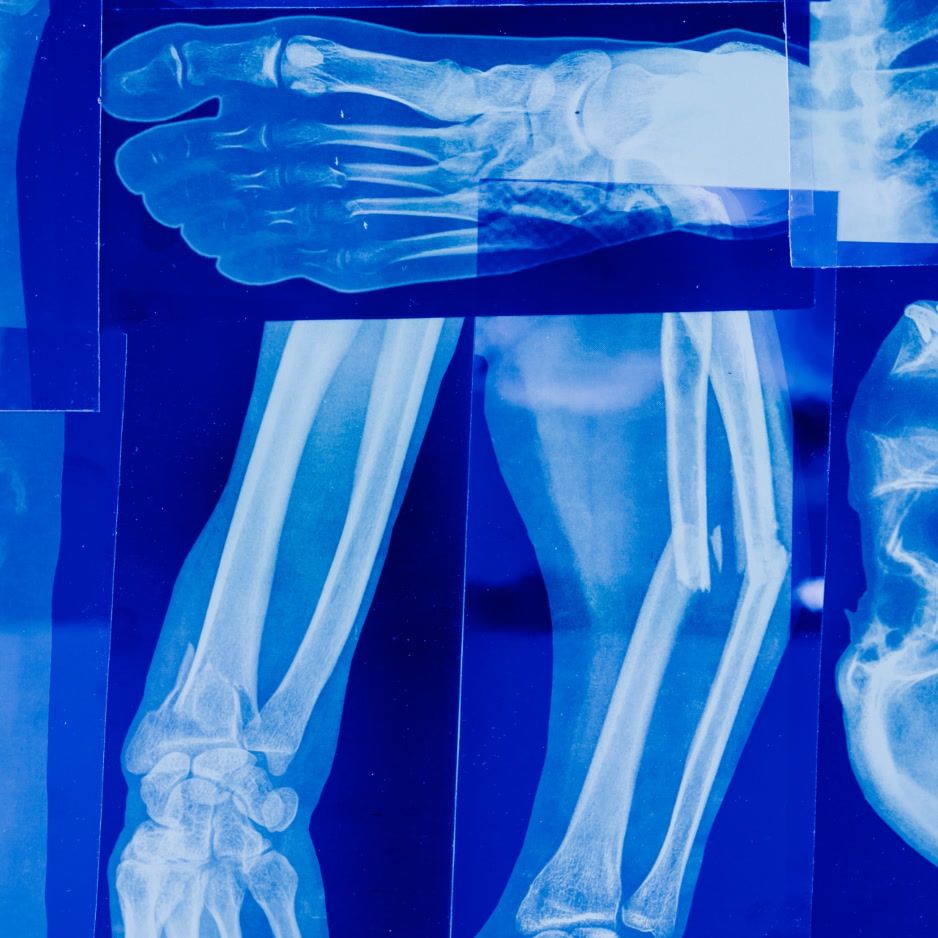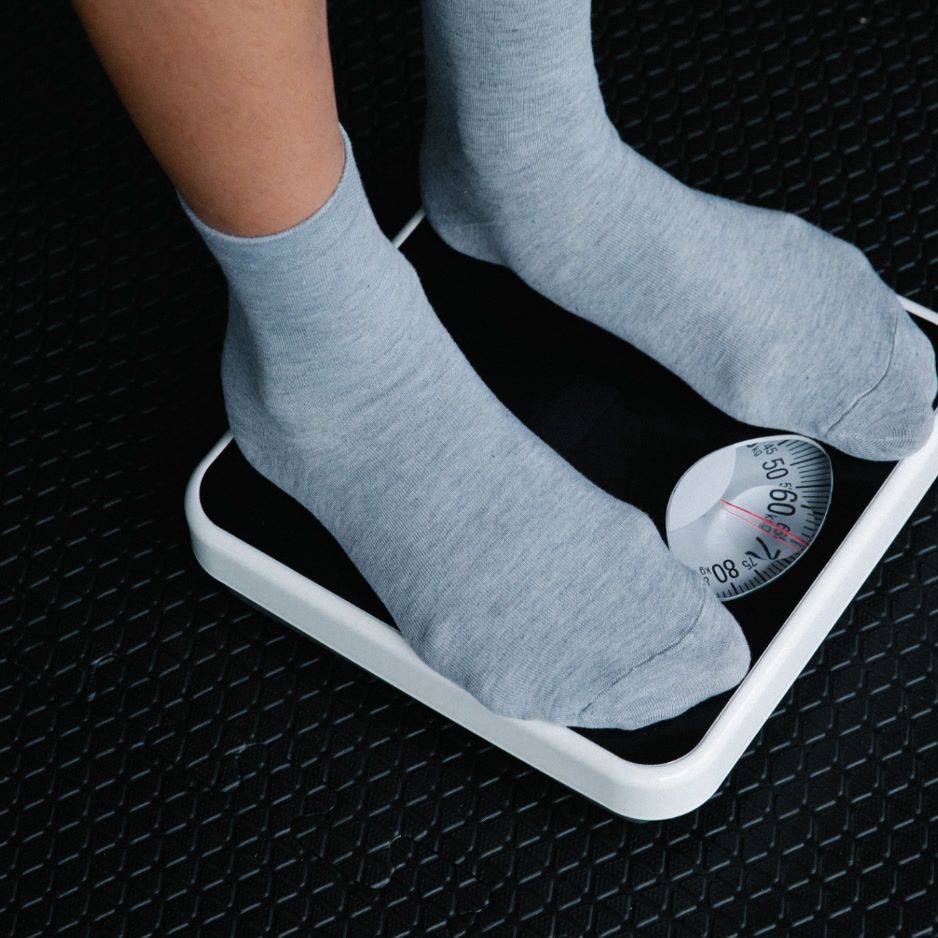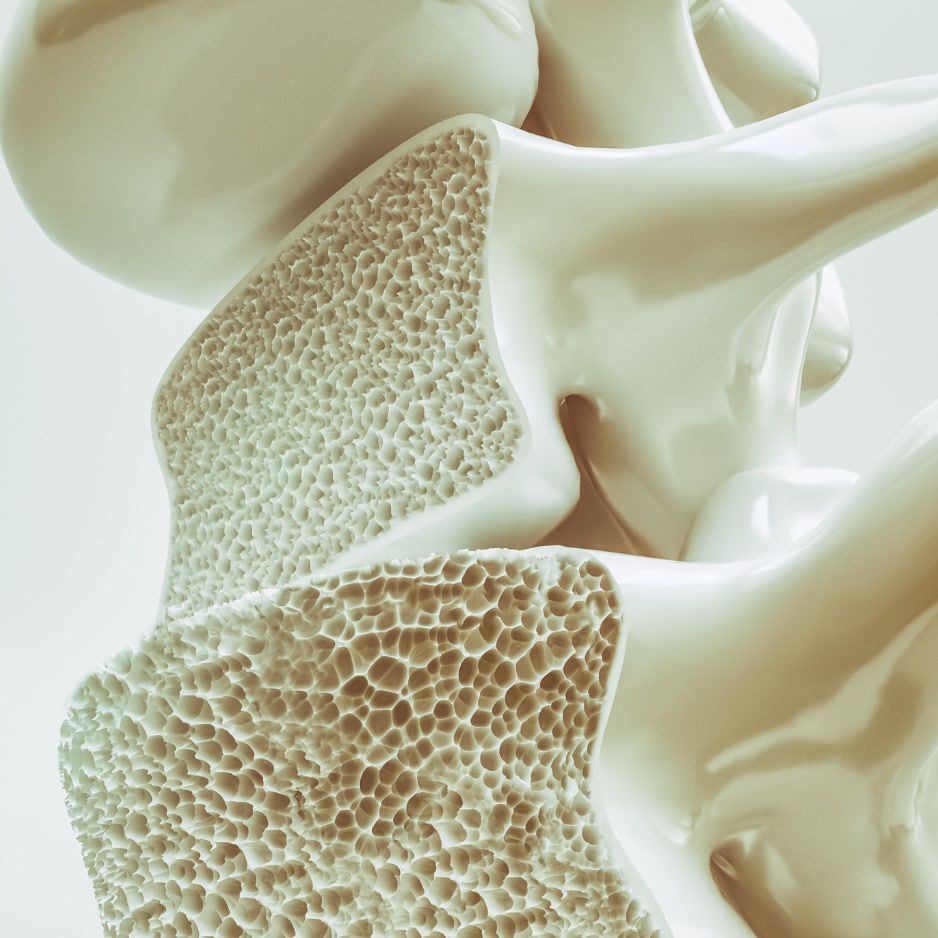How to Improve Balance: Exercises for Every Level
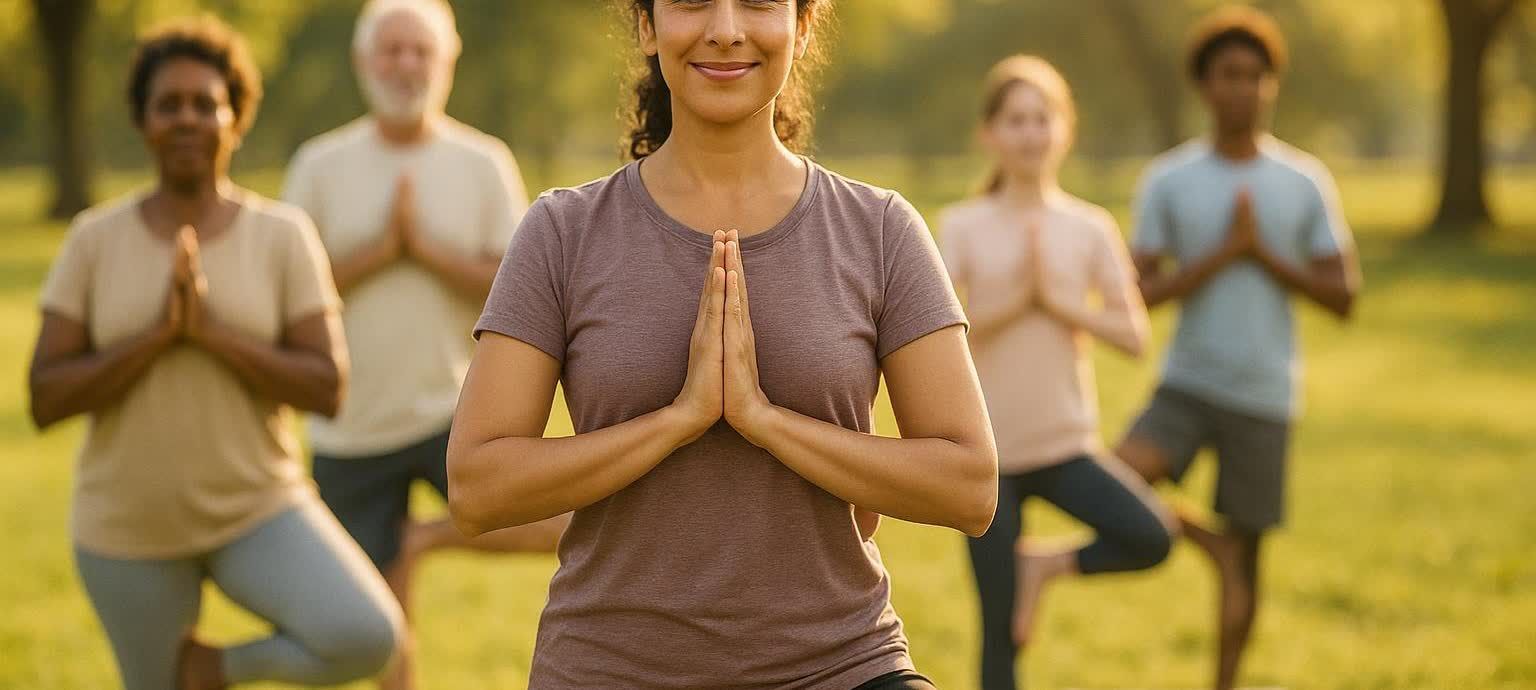
How to Improve Balance: Exercises for Every Level
Learning how to improve your balance is more than standing on one leg; according to the World Health Organization, 37.3 million falls each year are severe enough to require medical attention (WHO fact sheet). Balance is a trainable skill that safeguards independence, boosts athletic performance, and makes daily tasks—from climbing stairs to carrying groceries—feel effortless.
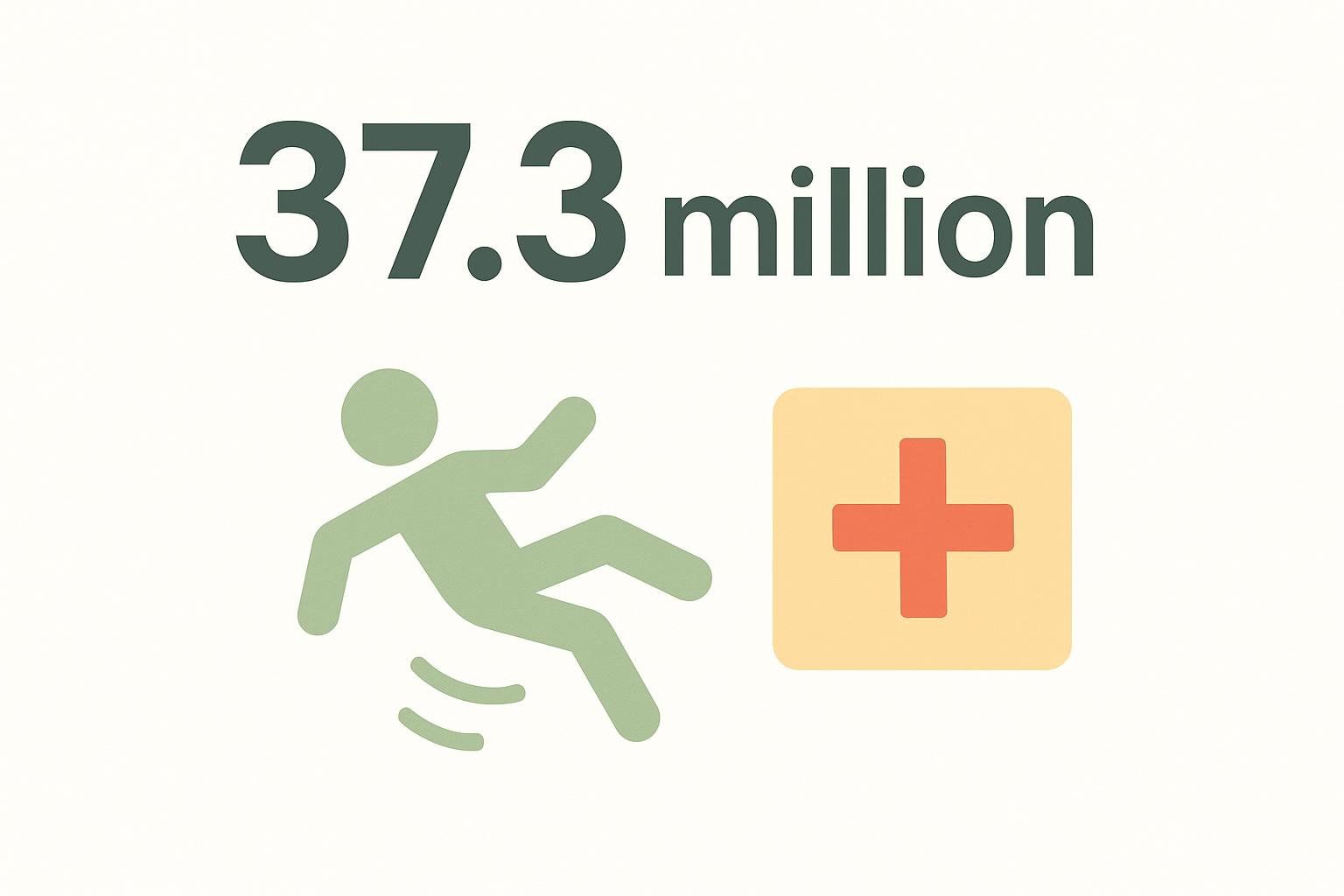
Inside this guide you’ll find a tiered exercise roadmap, a one-minute self-test to choose your starting level, and easy ways to track progress. You’ll also learn how a BodySpec DEXA scan can spot muscle imbalances that quietly undermine stability.
Table of Contents
- Why Balance Matters
- How Balance Works (in Plain English)
- 60-Second Self-Assessment Quiz
- Tiered Balance Program
• Beginner (Stability Basics)
• Intermediate (Dynamic Control)
• Advanced (Sport-Specific Power) - Customized Tips for Different Needs
• For Seniors & Fall Prevention
• For Desk Workers
• For Field & Court Athletes - Progress Tracking Tools
- FAQ
- Next Steps: Measure Your Gains with BodySpec
1. Why Balance Matters
| Benefit | Proof | Why You Care |
|---|---|---|
| Prevents Falls | Community exercise programs that combine strength and balance cut injurious falls by about one-third in adults 65+ (2023 systematic review). | Stay independent and avoid costly hospital visits. |
| Boosts Athletic Performance | Better single-leg balance correlates with faster change-of-direction times in soccer players (Journal of Strength & Conditioning Research). | Outsprint opponents and dodge injuries. |
| Eases Joint Stress | Improved proprioception can offload stress on knees and ankles, reducing everyday aches (Harvard Health). | Move more comfortably throughout the day. |
2. How Balance Works (in Plain English)
Think of balance as a collaboration between three key systems:
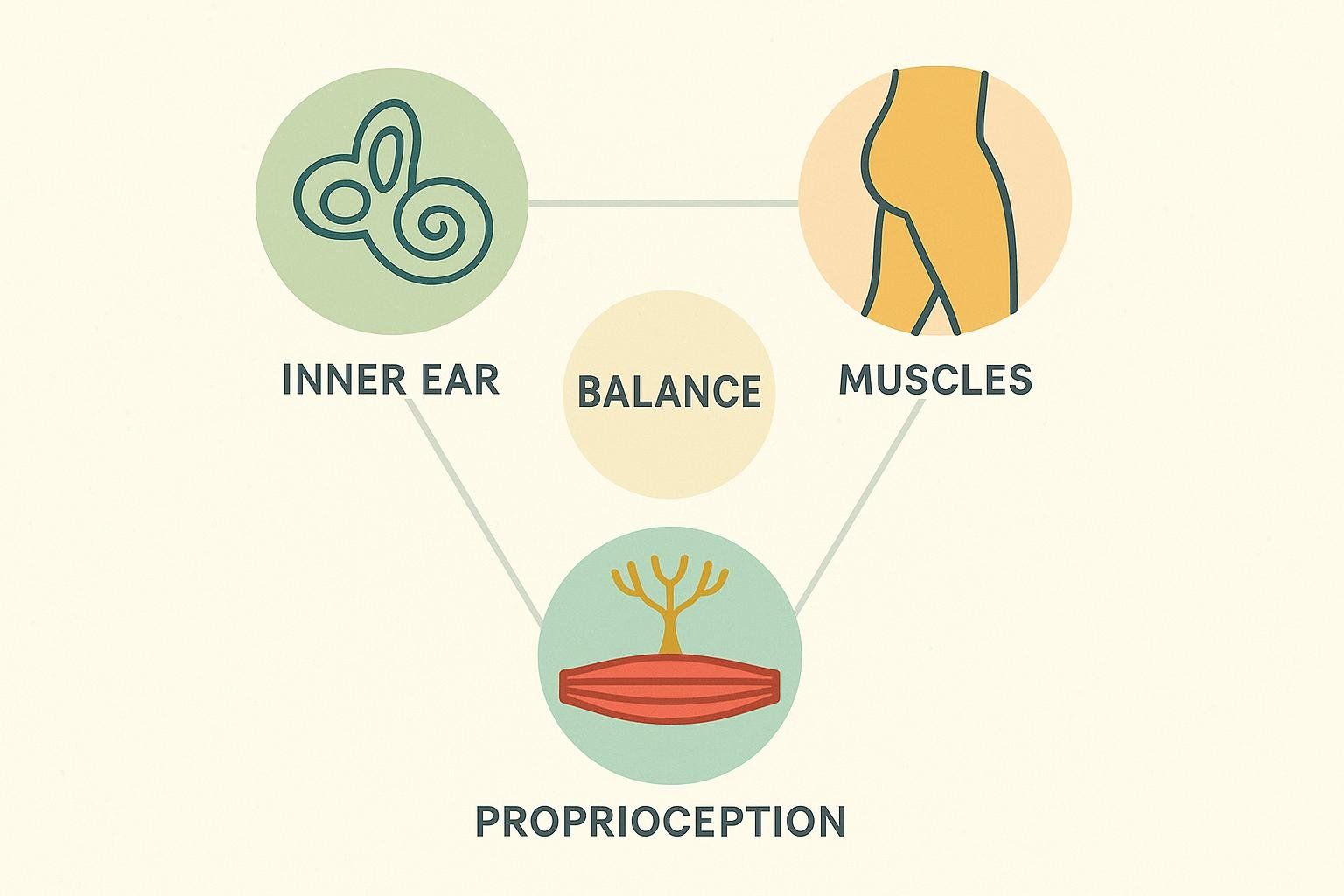
- Inner-ear GPS (vestibular system) – detects head movement.
- Body-wide sensors (proprioceptors) – tiny receptors in muscles and joints that relay position info.
- Core & Lower-Body Muscles – execute micro-adjustments to keep your center of gravity over your feet.
When one piece lags—weak glutes, stiff ankles, or a misfiring vestibular system—you wobble. A foundation of joint mobility helps these systems work together; if you need to loosen up first, explore our guide to mobility exercises.
3. 60-Second Self-Assessment Quiz
Answer Yes (✅) or No (❌):
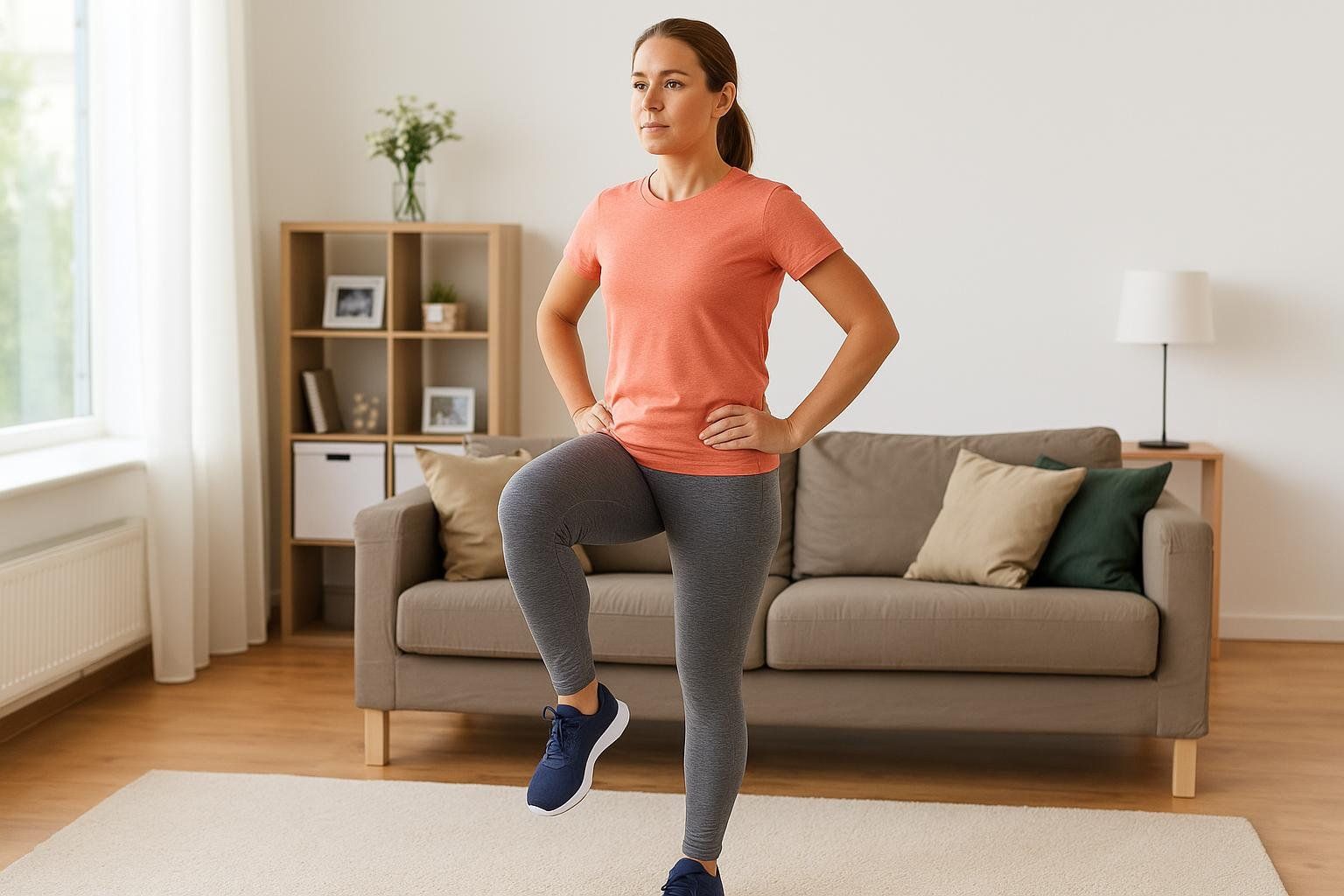
- Can you stand on one leg, eyes open, for 30 seconds without touching down?
- Can you perform 10 controlled single-leg calf raises on each side?
- Can you walk 10 heel-to-toe steps in a straight line without wobbling?
Scoring
- 0–1 Yes: Start with Beginner plan.
- 2 Yes: Jump into Intermediate plan.
- 3 Yes: Challenge yourself with Advanced drills.
Tip: Record your answers in a notebook or spreadsheet so you can re-test every 4–6 weeks.
4. Tiered Balance Program
Beginner: Stability Basics (≈ 10 minutes)
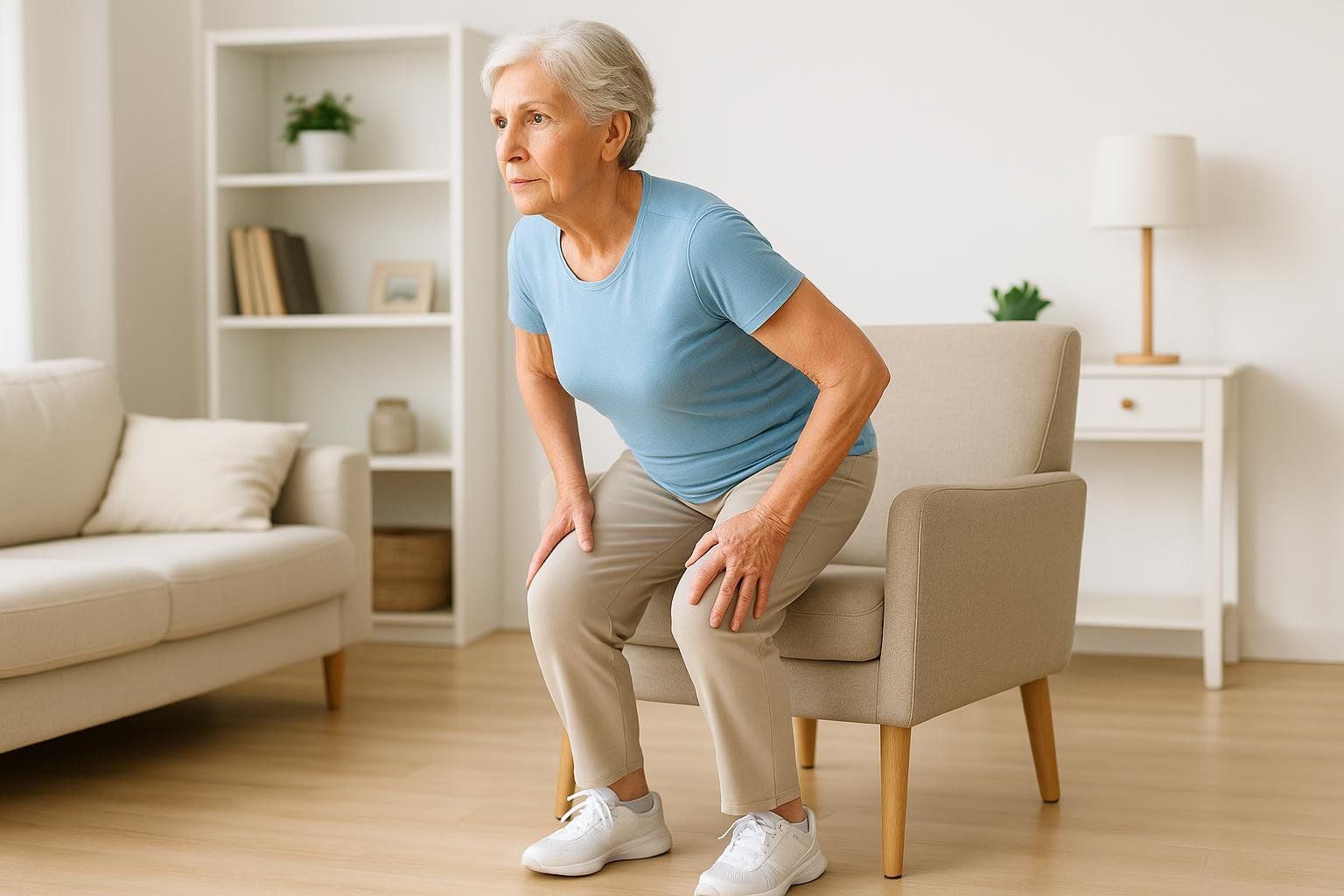
Ideal for older adults or anyone anxious about falls.
| Exercise | Sets × Reps/Time | Coaching Cues |
|---|---|---|
| Sit-to-Stand from chair | 2 × 10 | Drive through heels; lower slowly. |
| Tandem Stance Hold | 3 × 20 s/side | One foot directly in front of the other, eyes forward. |
| Heel-Toe Rock | 2 × 15 | Shift weight from heels to balls of feet while holding a countertop. |
| Marching in Place | 2 × 30 s | Lift knees hip-height; squeeze glutes. |
| Seated Core Bracing | 2 × 10 breaths | Exhale, draw ribs down—see our Core Strength Guide. |
Progression Tip: Once you can tandem-stance for 45 s, remove hand support.
Intermediate: Dynamic Control (≈ 15 minutes)
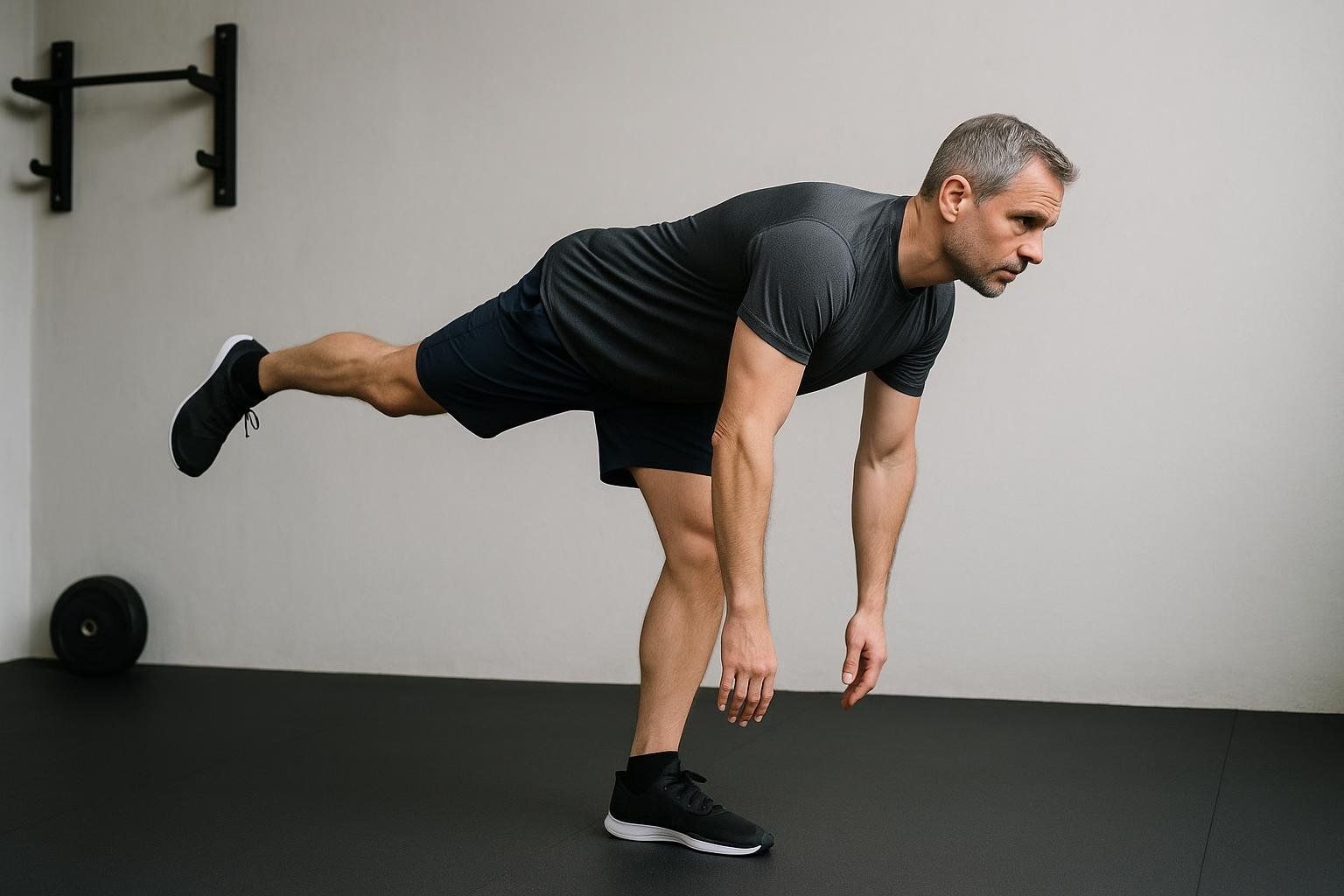
Great for desk workers and recreational athletes.
| Exercise | Sets × Reps/Time | Why It Works |
|---|---|---|
| Single-Leg Deadlift (bodyweight) | 3 × 8/leg | Trains hip hinge & ankle stability. |
| Lateral Step-Down | 3 × 8/leg | Builds eccentric quad & glute control. |
| Clock Reach (standing) | 2 × 1 round/leg | Challenges multi-directional proprioception. |
| Standing Pallof Press (band) | 3 × 12/side | Anti-rotation core bracing stabilizes spine. |
| Walking Lunges with Knee Drive | 2 × 10/side | Adds dynamic, gait-specific balance. |
Progression Tip: Hold light dumbbells once form is dialed.
Advanced: Sport-Specific Power (≈ 20 minutes)
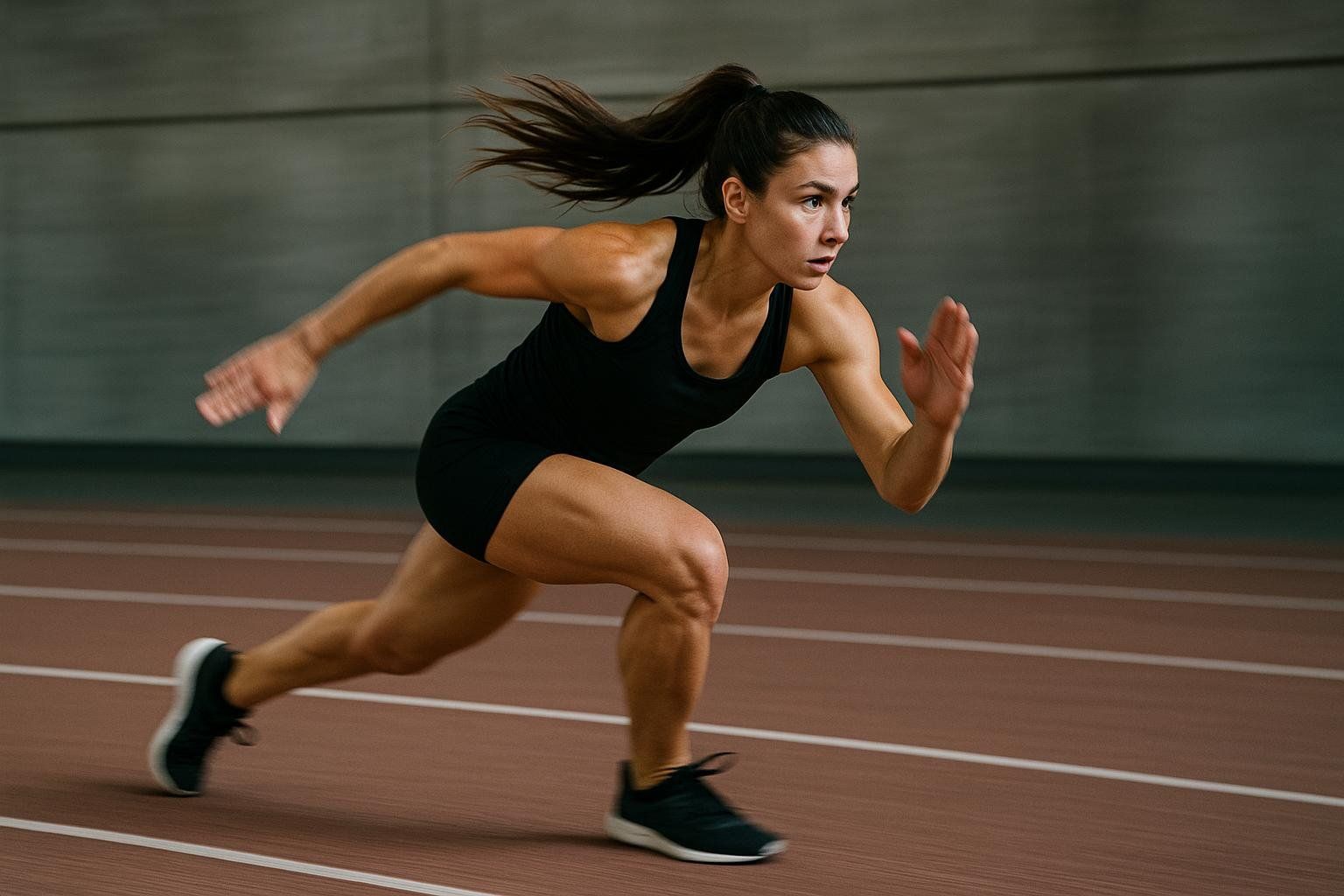
Designed for competitive or high-performance athletes.
| Exercise | Sets × Reps | Purpose |
|---|---|---|
| Single-Leg Box Jump | 4 × 5/leg | Reactive power & landing mechanics. |
| BOSU Lateral Hop-Hold | 3 × 6/leg | Unstable surface trains ankle strategy. |
| Skater Bounds | 3 × 10/side | Transverse-plane power & knee control. |
| Turkish Get-Up | 3 × 3/side | 360° stability under load. |
| Eyes-Closed Single-Leg Balance | 2 × 30 s/leg | Removes visual input to tax vestibular + proprioception. |
Progression Tip (for jumps & hops): Make ground contact as quick and explosive as possible—think “spring off the floor,” not “sink and jump.”
5. Customized Tips for Different Needs
For Seniors & Fall Prevention
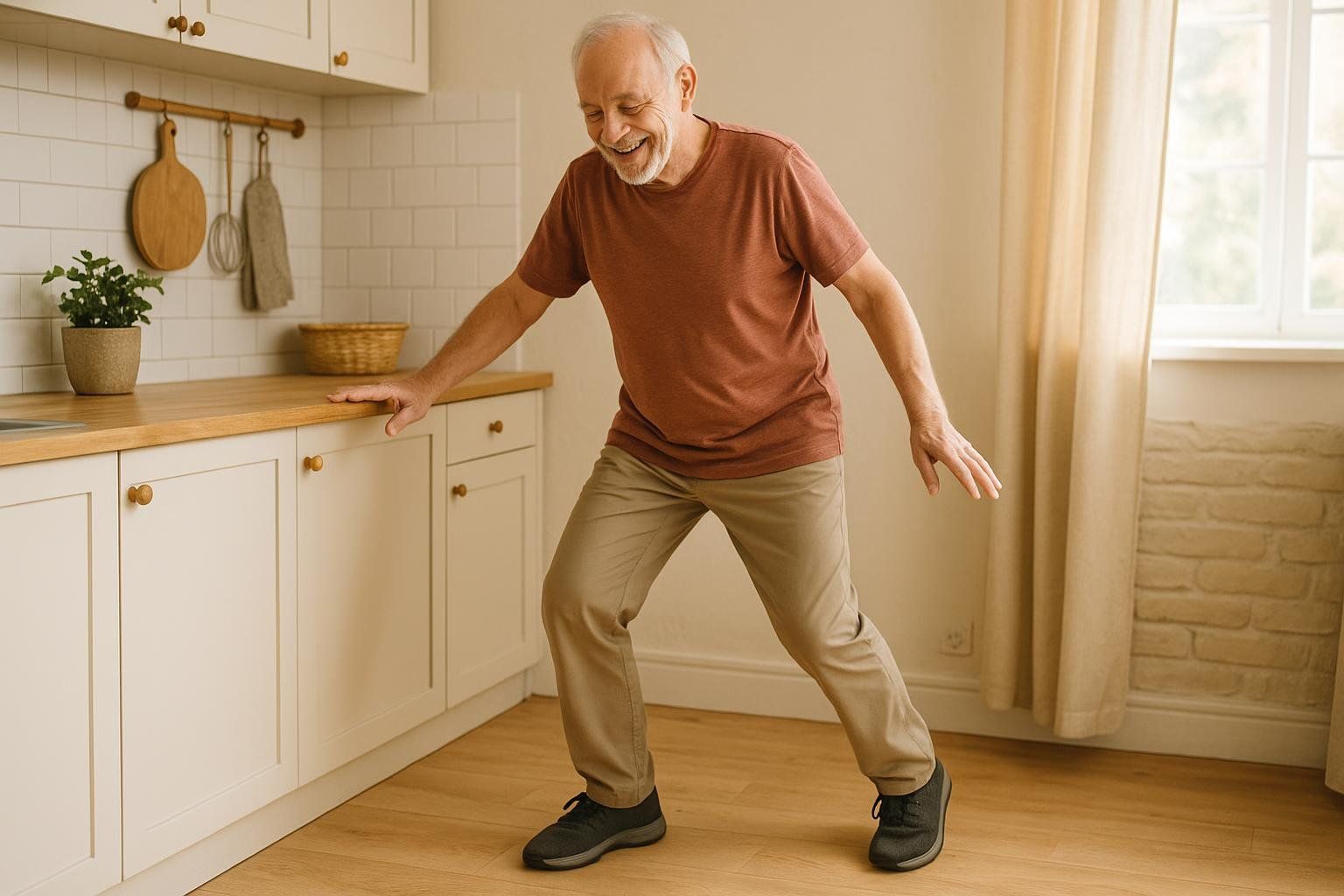
Consider adding Otago exercises such as mini-squats, backward walking, and sideways walking—shown to cut fall risk by 35–40 % in high-risk adults (National Council on Aging). Also walk through a simple home-safety checklist: install grab bars, secure loose rugs, and add night lights.
For Desk Workers
- Micro-Break Drills (3 min): Seated ankle circles → standing calf raises → desk hip swings.
- Posture Pairing: Follow each balance break with a chest-opener stretch to combat rounded shoulders.
For Field & Court Athletes
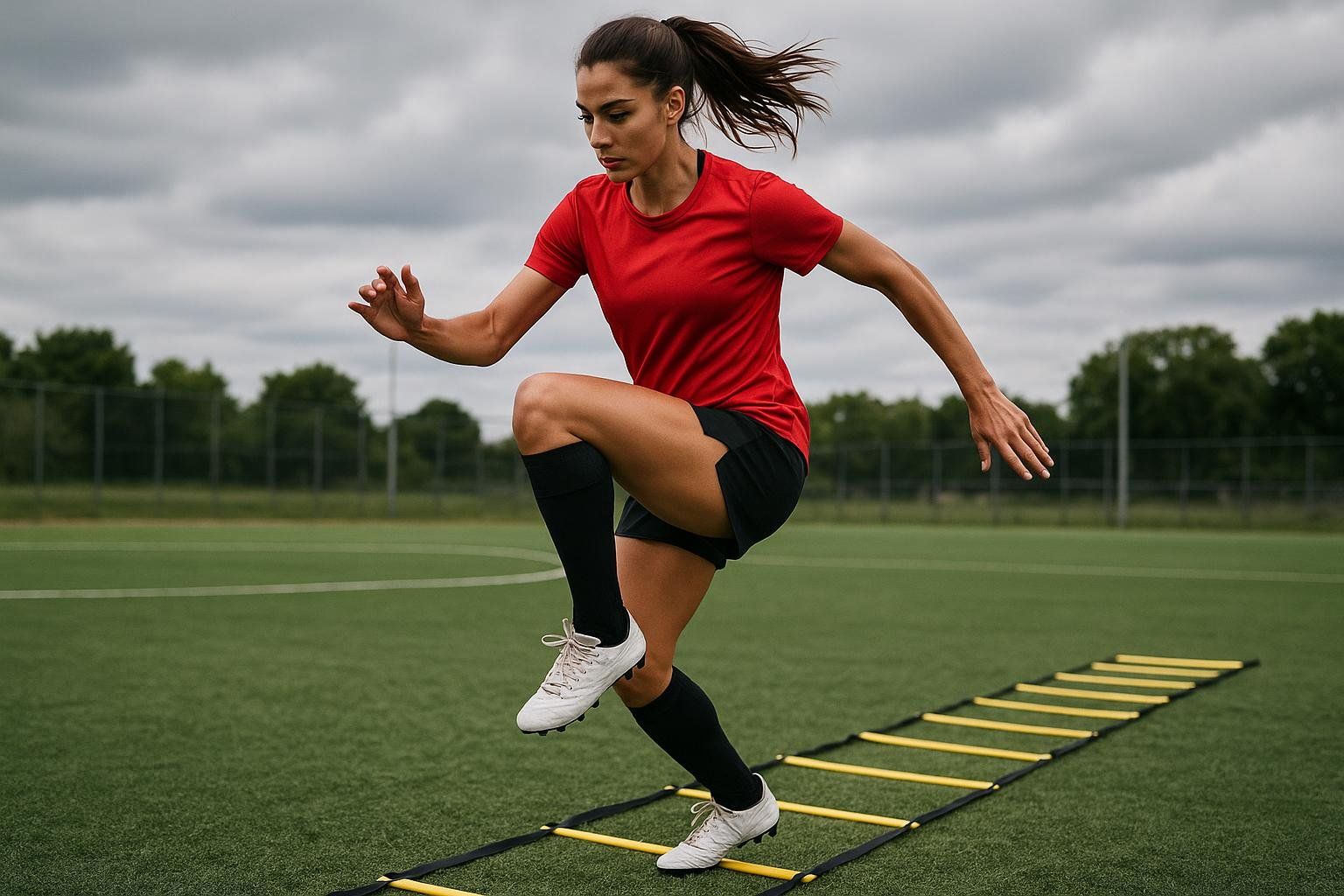
- Reactive Ball Drops: For a partner drill, have someone drop a tennis ball; sprint and grab it on the first bounce. For a solo option, toss a tennis ball against a wall at random angles, catch it after one bounce, then immediately accelerate in a new direction.
- Agility Ladder + Single-Leg Hold: Run through the ladder, then land and hold your position on one foot for two seconds. This builds deceleration strength and ankle stability.
- Symmetry Testing: If you’re working with a coach or physical therapist, ask them to run a Y-Balance test—a simple reach assessment of single-leg stability. Clinicians often view side-to-side gaps greater than 4 cm as a possible injury-risk indicator that warrants extra single-leg work (Shirley Ryan AbilityLab).
6. Progress Tracking Tools
- DIY Log: Use a notebook or a simple spreadsheet to record exercises, hold times, and a 1–10 stability rating. Chart your own monthly improvements.
- Monthly Re-Test: Repeat the 60-Second Quiz. Aim to move up a tier every 8–12 weeks.
- DEXA Insight: A BodySpec scan quantifies left-vs-right leg lean mass and bone density to uncover hidden imbalances that raise injury risk.
7. Frequently Asked Questions
Q: How often should I do balance exercises?
The American College of Sports Medicine advises including balance training at least 2–3 times per week, and for older adults at risk of falls, 3 or more sessions per week are recommended. Short daily micro-sessions (≤ 5 minutes) can further accelerate gains.
Q: Do I need fancy equipment?
No. A firm pillow or folded towel works like a wobble board. Advanced trainees can add BOSU or foam pads for variety.
Q: How long until I see results?
While individual results vary, many people notice improvements within a few weeks of consistent practice.
Q: Is yoga enough?
Yoga boosts flexibility and static balance but lacks the reactive drills vital for sports performance and fall prevention. Combine practices for best results.
8. Next Steps: Quantify Your Gains with BodySpec
Traditional scales can’t reveal whether weak hip stabilizers are holding you back. A DEXA scan pinpoints lean-mass asymmetries and bone density in about 10 minutes—radiation exposure is minimal, roughly comparable to eating four bananas (BodySpec blog).
- Book a baseline scan before starting this program.
- Rescan every quarter to validate muscle-symmetry improvements.
- Use the data to fine-tune your training or work with a physical therapist.
Ready to put numbers to your newfound stability? Book a BodySpec scan near you and level up your balance today.
